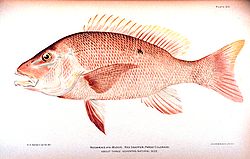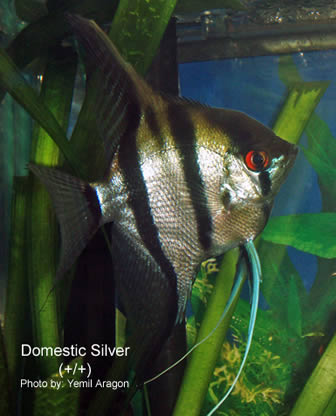Tag Archives: fry
Buzz Continues to Build Surrounding Theory That Volcano Cause Boom in Salmon Population
There has been a lot of buzz surrounding the speculation, which was tossed around this week, that a volcanic eruption on an Alaskan island back in 2008 is somehow responsible for the boom in the salmon population this year in the rivers of British Columbia in Canada.
If this speculation proves to be correct, it will help biologist’s to shed some new light on the rather unpredictable sizes of the populations of salmon year in and year out. It will also lend credence to the controversial idea of seeding the oceans of the world with iron to help lend a helping hand to other fish species, who have seen a decline in their populations. However, some scientists, who were contacted by Nature, have cautioned that the theory is “far fetched”.
After the salmon population took a nose dive back in 2009, the sockeye salmon made a big comeback in British Columbia’s Fraser River this year. It has been suggested that the reasoning behind this is that the iron in the ash from the volcanic eruption on Kasatochi island, which created a rather huge influx of phytoplankton, may have indirectly provided the salmon with the food they needed to stage a miraculous comeback. This suggestion was made by Tim Parsons, a prominent Canadian scientist, and has a government-awarded medal named after him for ocean scientists.
It looks like he may be getting yet another feather in his hat, if the scientific community chooses to explore this theory further. If its possible to refurnish fish stocks around the globe by seeding the ocean with some iron, we should take the opportunity.
Despite Oil Spill, Fish Fry Showing up In Record Numbers in Gulf of Mexico
Snapper fry are all over the place. There are also trout, grunt and grouper fry all over the place as well. The early tabulation of the annual count in the beds of grass spattered about the northern part of the Gulf of Mexico seems to suggest that the larvae of some kinds of fish have survived the BP oil fiasco, and what’s more, there are swarms of them.
“My preliminary assessment, it looks good, it looks like we dodged a bullet. In terms of the numbers of baby snapper and other species present in the grass beds, things look right,” commented a scientist with the University of North Carolina’s Institute of Marine Science, Joel Fodrie, who has been actively involved in the study of seagrass meadows along the coast for the past five years.
Joel’s group has taken samples of the different sea life in the grass beds in Alabama, Mississippi, and the Florida Panhandle. They will be taking a sample from around Louisiana’s Chandeleur Islands come this Autumn.
Back at the height of the fiasco, when a seemingly endless stream of oil was floating about on the surface, researchers were most concerned as to whether the trillions of larvae which hatch each spring offshore would survive the severe contamination of the spill.
It’s looking like they did, and it’s a good thing too. It just goes to show you that mother nature is more resilient than we give her credit for. There is hope yet for the Gulf to make a full recovery, and that folks, is good news indeed.
Disinfectants commonly used by fish breeders increase the risk of swim bladder disorder

In an effort to prevent fungal growth, many fish breeders use various chemicals, such as methylene blue, hydrogen peroxide, acriflavine and chloramine-T to aquariums where eggs are kept. This practise is especially common among breeders who will not let the parents stay with eggs and fry. Many fish species carry out parental care and eggs from such species often depend on one or both parents gently fanning fresh water over them and manually removing any unfertilized eggs from the batch. Without such parental care, the eggs easily succumb to fungi unless the fish breeder adds some type of fungicide to the water.
The new Israeli study, which focused on Angelfish (Pterophyllum scalare), revealed that some of these chemicals may be responsible for a swim bladder disorder in developing fish. In fish suffering from this type of disorder, the swim bladder can not inflate properly and the fry fails to develop into a fully free-swimming adult. Among aquarists, such fish are commonly known as “belly sliders” due to their peculiar way of moving around the fish tank.
Methylene blue
Eggs hatched in the presence of 1, 2 and 5 ppm methylene blue exhibited significant increases in swim bladder non-inflation (11%, 9% and 33%, respectively; none in controls).
Time of exposure to methylene blue was a key factor. Exposure for up to 1 day post-hatch did not affect swim bladder non-inflation, but exposure from 2 days onwards significantly increased swim bladder non-inflation.
Hydrogen peroxide
Hydrogen peroxide at 250 ppm significantly increased swim bladder non-inflation (65% comparing to 27% in the control). Higher concentrations resulted in 100% mortality.
Acriflavin
Exposure to acriflavin at 2.25 ppm, but not 1.25 ppm, significantly increased swim bladder non-inflation (75% and 52% respectively; 20% in controls).
Chloramin-T
Chloramine-T did not significantly affect swim bladder non-inflation.
For more information, see the paper “C. Sanabriaa, A. Diamantb and D. Zilberga (2009) – Effects of commonly used disinfectants and temperature on swim bladder non-inflation in freshwater angelfish, Pterophyllum scalare (Lichtenstein)”. The paper has been published in the journal Aquaculture.
Stressed female fish produces active but abnormal offspring
Fish females subjected to stress produce highly active offspring but the risk of abnormalities also increases, according to new research carried out by Dr Monica Gagliano, a research fellow with the AIMS@JCU joint venture, and Dr Mark McCormick from the ARC Centre of Excellence for Coral Reef Studies at the James Cook University.
The research focused on the Ambon damsel fish (Chromis amboinensis), a common reef species in the Indo-Pacific, and has deepened our understanding of how stress factors affect not only the adult fish themselves but also their offspring. Being more active than normal affects survival and more active offspring will therefore have important implications for fish populations in a changing environment.
In their laboratory testing, Dr Gagliano and Dr McCormick exposed fertilized Ambon damsel eggs gathered from the wild to various amounts of the stress hormone cortisol. Previous studies have shown that female Ambon damsels release cortisol from their ovaries when subjected to environmental stress. Fish that lived on reefs with few predatory fish around and little competition released less cortisol than those who lived in environments where they had to deal with a lot of competition and predators.
In addition to making the offspring more active, high doses of cortisol also increases the risk of developmental defects.
“If the mother fish is more stressed and she passes on more cortisol, then the offspring will have a faster developmental rhythm and therefore errors will be more likely in their development. One likely result of this is that the offspring are born asymmetrical,” Dr Gagliano said.
“These baby fish can’t make these important hormones until later in life, so their whole initial development is determined by hormones they obtain from their mothers,” Dr McCormick added.
Developmental errors can naturally cause serious problem for fish and lower their chances of survival. In 2008, Dr Gagliano and her colleagues showed that fish born with asymmetrical ear bones have a hard time handling the open ocean stage of their life and that a large percentage of these fishes die before being able to find a reef to settle on. The asymmetry hurts the fish’s hearing ability and makes it difficult for it to pick up reef-related sounds.
In her new research project, Dr Gagliano has been able to show that maternal stress has a large measurable effect on the shape of ear bones. Offspring subjected to a high dose of cortisol are more than twice as likely to have asymmetrical ear bones compared with those that received no dose of cortisol.
You can find more information in the study published in Oecologia.
Single moms have bigger brains
In a new study on Tanganyika cichlids, three scientists[1] [2] [3] from Uppsala University in Sweden have shown that intricate rearing behaviour varies with brain size in females. The only previously published study showing similar patterns concerned predatory animals.
Tropheus moori – one of the species used in the study. – Picture www.jjphoto.dk
How the vertebrate brain has developed throughout the course of evolution is still not clear, and we are still not certain if brain functions in a specific species develop to match a demanding environment. One way of learning more about this is to compare brain size and structure in closely related species living under dissimilar circumstances.
“It is important to look at differences between males and females since females often distinguish themselves from males, both in behaviour and appearance”, says Niclas Kolm, lead-author of the study.
The study looked for correlations between brain size and ecological factors in a large number of specimens from 39 different species of Tanganyika cichlid. Lake Tanganyika is especially suitable for this type of study since it is inhabited by cichlid groups exhibiting significant dissimilarities in both brain structure and ecology, and whose ancestry is well known. Tanganyika cichlids varies dramatically from species to species when it comes to factors such as body size, diet, habitat, parental care, partner selection, dissimilarities between the sexes, mating behaviour, and brain structure.
The result of the study showed a correlation between brain size and the two factors diet and parental care behaviour. Species where only the female fish cares for egg and fry turned out to have bigger brains than species where both parents engage in parental care. The brain was however only larger in females; there was no difference in brain size between males of the two groups.
The largest brains of all were found in algae-eating cichlids. These fishes live in environments characterized by a high level of social interaction. “This indicates that social environment have played a role in brain development”, says Kolm.
The study was published in the web version of “Proceedings of the Royal Society of London Series B” on September 17. You can find it here (http://journals.royalsociety.org/content/j114062824820l76/).
[1] Alejandro Gonzalez-Voyer, Animal Ecology, Department of Evolutionary Biology, Evolutionary Biology Centre, Uppsala University
[2] Niclas Kolm, Animal Ecology, Department of Evolutionary Biology, Evolutionary Biology Centre, Uppsala University
[3] Svante Winberg, Department of Neuroscience, Physiology Unit, Biomedical Centre (BMC), Uppsala University



